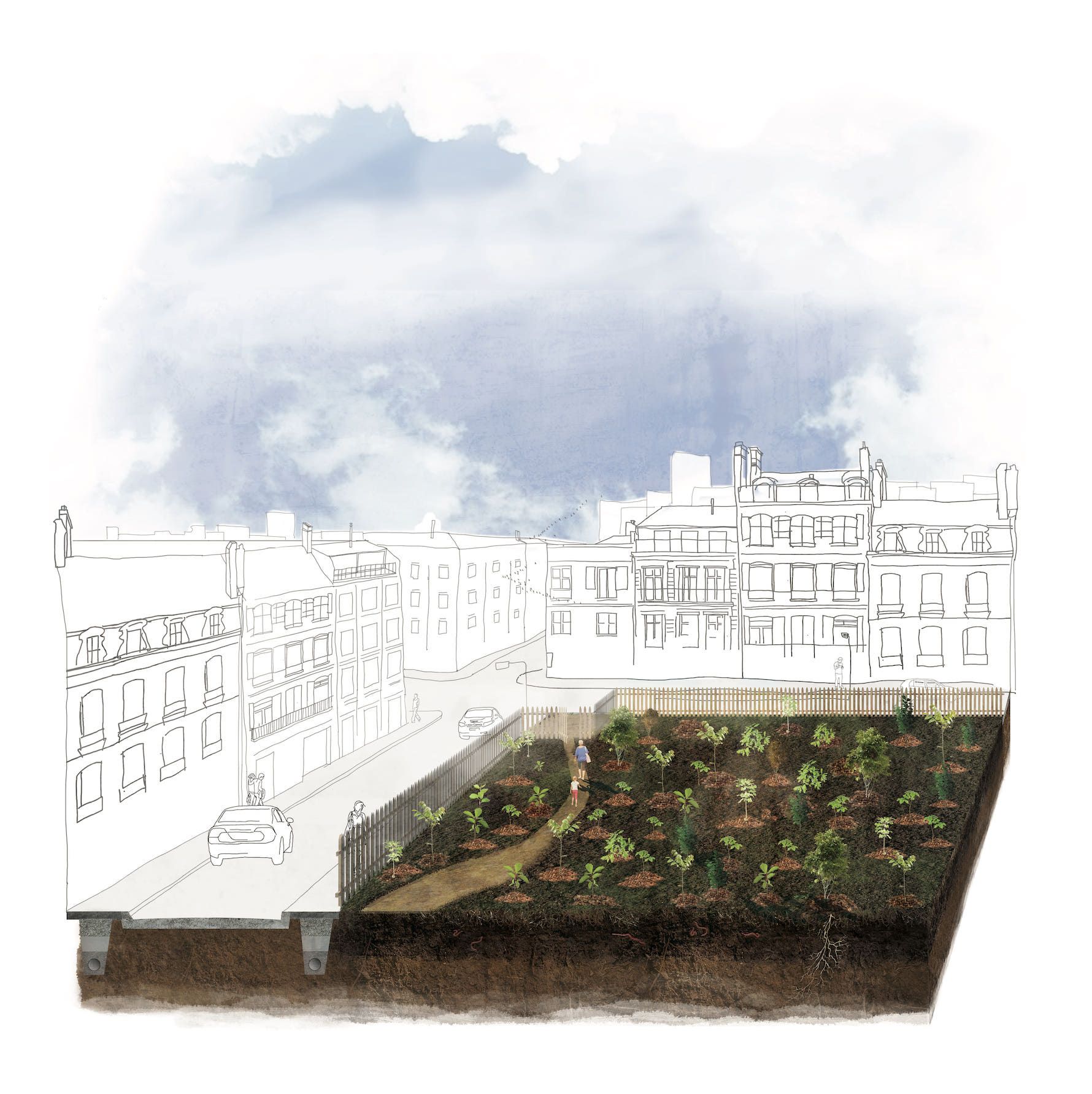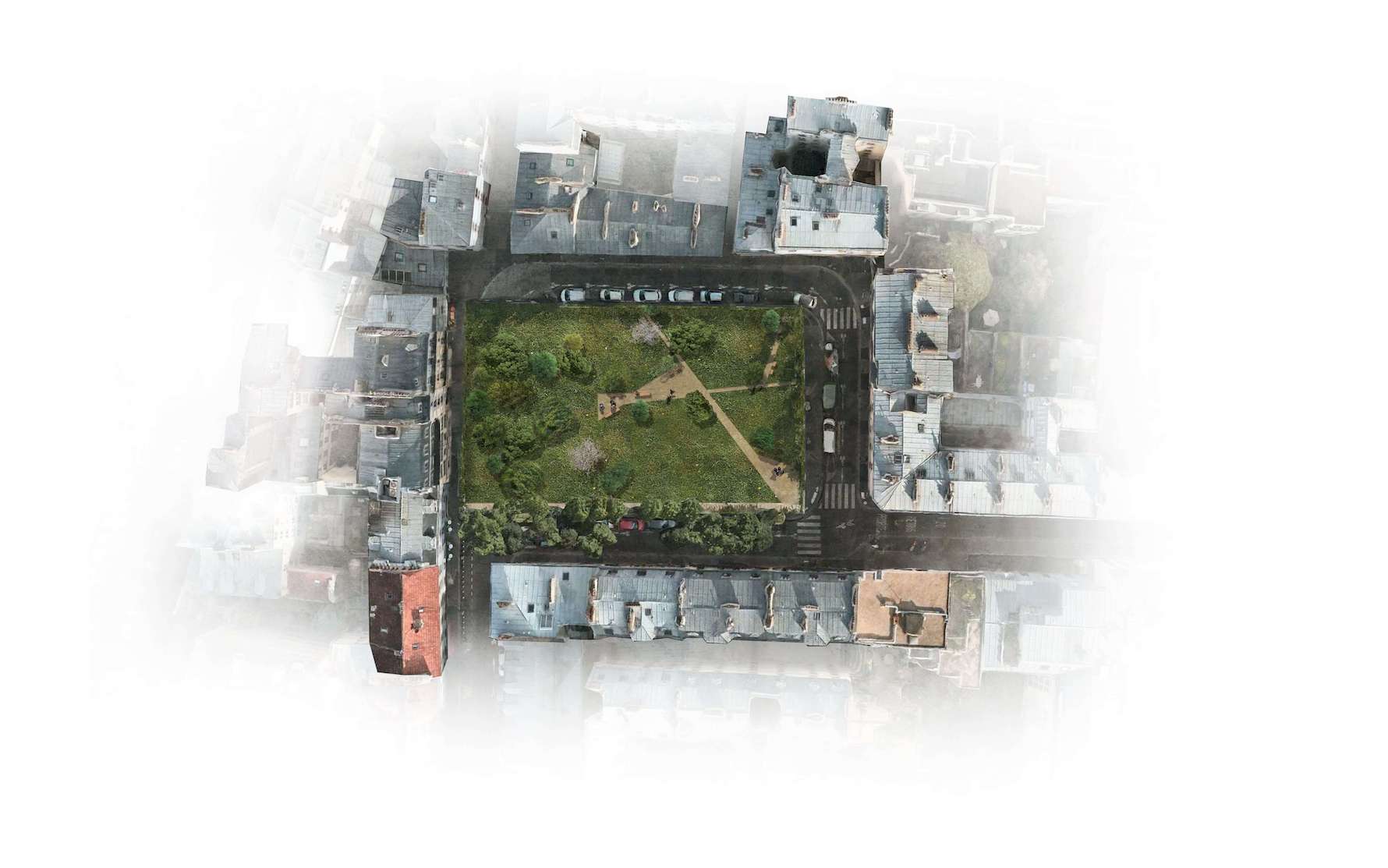What is an urban forest? How do you plant trees in the city? An "urban forest" is defined by its comprehensive character, which includes all urban wooded areas. Improving cities’ green ecosystem is a fundamental step in metropolises’ socio-environmental transition, but certain essential criteria must be met to ensure the sustainability of the ecosystem services provided by the urban forest.
To face the challenges that threaten modern cities, the urban forest seems to be a viable solution. Urban cooling, air pollution reduction, sustainable water management, as well as physical, psychological and economic benefits: trees in cities have real potential for taking action in the fight against the negative effects of urbanization, which is a main driver of climate change. Nevertheless, creating forests in cities is different from planting forests in rural areas. Urban greening must make it possible to maximize the resilience and the cohabitation of mineral and vegetal elements. Towards creating a new ecosystem: the city-forest.
What is an urban forest in practice?
According to FAO's official 2017 definition, urban forests are "networks or systems comprising all woodlands, groups of trees, and individual trees located in urban and peri-urban areas." This definition is behind the concept of "green ecosystem" in cities, which includes all the wooded areas. The notion of green network, which aims to recreate an uninterrupted route for biodiversity to move around freely, also stems from this global vision.
The way an "urban forest" is fragmented makes it very different from forests found in rural areas. So, what exactly is a forest in the city?

The "urban forest" can be broadly defined to include different categories of afforestation that can be divided up based on their age, extent and structure.
These include:
- Relict forests, which are the remnants of ancient forests preserved during the construction of the city, although often altered;
- Isolated and roadside trees, which include all trees along streets, around city squares, buildings, garden paths and homes;
- Planted areas, which refer to areas entirely covered with trees, often located in parks or reserves on the outskirts of urban areas, or which take the form of wooded islands such as the dense micro-forests made with the Miyawaki method.
- Urban wastelands, when trees regrow on abandoned land.
These different types of complementary stands each provide a range of ecosystem services that make the urban forest so valuable. Their presence, even scattered, contributes to the ecological continuity of territories by connecting the city with outlying forests.
Enriching urban forests: what does that include?
Planting trees to grow urban forests therefore represents a concrete response to the challenges facing cities and their inhabitants. The European Environment Agency recommends a green space within 300 meters of each home. To achieve this ideal goal, we have to understand the relationships between trees and cities in order to encourage their adaptability in an urban context. Whereas a city is often built as a fixed landscape, a forest is constantly evolving. As a long-term player, a forest constantly communicates with its environment. It has to be in perfect harmony. Designing the city-forest of tomorrow means imagining an urbanity that adapts to the bioclimatic specificities of its environment to become more resilient.
Creating an urban forest can involve:
- Enhancing existing natural vegetation: what is already there constitutes a solid base to build on. The trees that made up the landscape long before cities are a precious heritage that should be nurtured and expanded to connect the entire plant ecosystem.
- Harmonizing urban sprawl with green spaces: responding to the immediate needs of mankind, urbanization has often taken up space without any real strategy or thought given to the long-term. But it is now possible to imagine a balance to the benefit of vegetation. Some interstices and non-buildable spaces can easily be used to plant trees: roadsides, boundaries of commercial zones, etc.
- Planting trees where there aren’t any: afforestation requires specific surfaces. In suburban areas, which are less dense, there is more land available with existing potential for use. In downtown areas, spatial planning is essential.

A variety of techniques
As part of the development of greener cities, integrating the plant world is possible in various ways: dense woodlands such as Miyawaki forests, layered plantations, forest gardens, street or park trees, hedges, etc.
Below are a few examples of projects that contribute to developing the urban forest:
- Forestry method: although the urban environment is more restrictive, forestry methods practiced in rural areas by forest technicians remain the most effective way and can be adapted to urban planting. The processes are varied and specific to the context of each project. In most cases, trees are planted at medium density (1,000 to 2,000 trees per hectare of land) in the form of small seedlings spaced a few meters apart. Frugality is always the rule: the soil is lightly tilled and brush-cutting only takes place during the first year. Maintenance activities are carried out every 10 years or so: removing certain trees to make room for others, managing dead wood to favor biodiversity, creating public trails, pruning branches to balance the trees, etc. Just like in a forest in the countryside.
- Miyawaki-type micro-forests: this is dense afforestation process based on a planting method designed in Japan by botanist Akira Miyawaki. This technique comes down to growing a natural forest on degraded urban land. Involving a large number of local species (up to 30) and a very high density of trees (30,000 trees per hectare), the aim is to re-establish a strong natural selection process to ensure the formation of a resilient ecosystem, similar to that of a wild forest, rich in biodiversity.
- Edible forests or forest gardens: this smaller-scale variation of agroforestry involves combining trees and crops in order to reproduce the natural mechanisms of a forest. In addition to promoting local food production and consumption (fruit, berries, mushrooms) in urban environments, edible forests are great places to meet people and share experiences.
Forest, wooded land or micro-forest? Simply put, it’s about size. A forested area will be called a "forest" if it measures more than 0.5 hectares, i.e. a soccer field. Anything smaller than that, which is often the case in cities, is considered a wooded land or a micro-forest. These two terms are equivalent.
More and more, educational workshops are being developed focusing on improving urban forests in French and European cities. Mixing different audiences, they are an excellent way to bring people together and raise awareness about the environmental issues facing today's cities. To go a step further, the creation of eco-neighborhoods - designed to minimize the impact of housing on the environment and to maximize people’s well-being - almost systematically means planting trees. These sustainable living spaces represent scale models for the cities of tomorrow.

Fundamental criteria
To plant trees in the city, a few key rules must be followed.
- Diverse species: a minimum of 5 different and complementary forest species must be chosen, in order to take advantage from each of their benefits, promote biodiversity and make the urban forest more resilient in the long term.
- Choice of species: the plants chosen must respect the local urban context (available space, air and soil quality, etc.) and must be compatible with ongoing climate change. Some trees have properties that are particularly well adapted to cities. For example, species with abundant and/or rough foliage are able to absorb more pollutants. Species considered to be invasive, such as locust trees, should be avoided.
- Frugality: improving urban forests requires using gentle management methods and trusting nature. Tilling is restricted as much as possible and watering is controlled. Plantings are left to evolve freely or semi-freely to maintain biodiversity.
- Cooperation: local populations need to get involved in developing urban forests, because they are their first beneficiaries. The municipality’s role is to drive change, federate initiatives and mobilize residents. As a result, participatory plantings in cooperation with local, private and public actors should be given maximum priority. To ensure the sustainability of a project, we must also think about raising awareness as well as holding workshops dedicated to the maintenance and protection of urban wooded areas.

As complex networks that provide shelter for many living beings, cities and forests have countless reasons to coexist, for the benefit of all. Many opportunities to improve urban forests come from applying the right methods. Through tailor-made projects adapted to each context, Reforest'Action supports companies and city governments wishing to act in favor of the environment and the well-being of city residents. In France and Europe, we provide technical and financial support to help create urban forests.